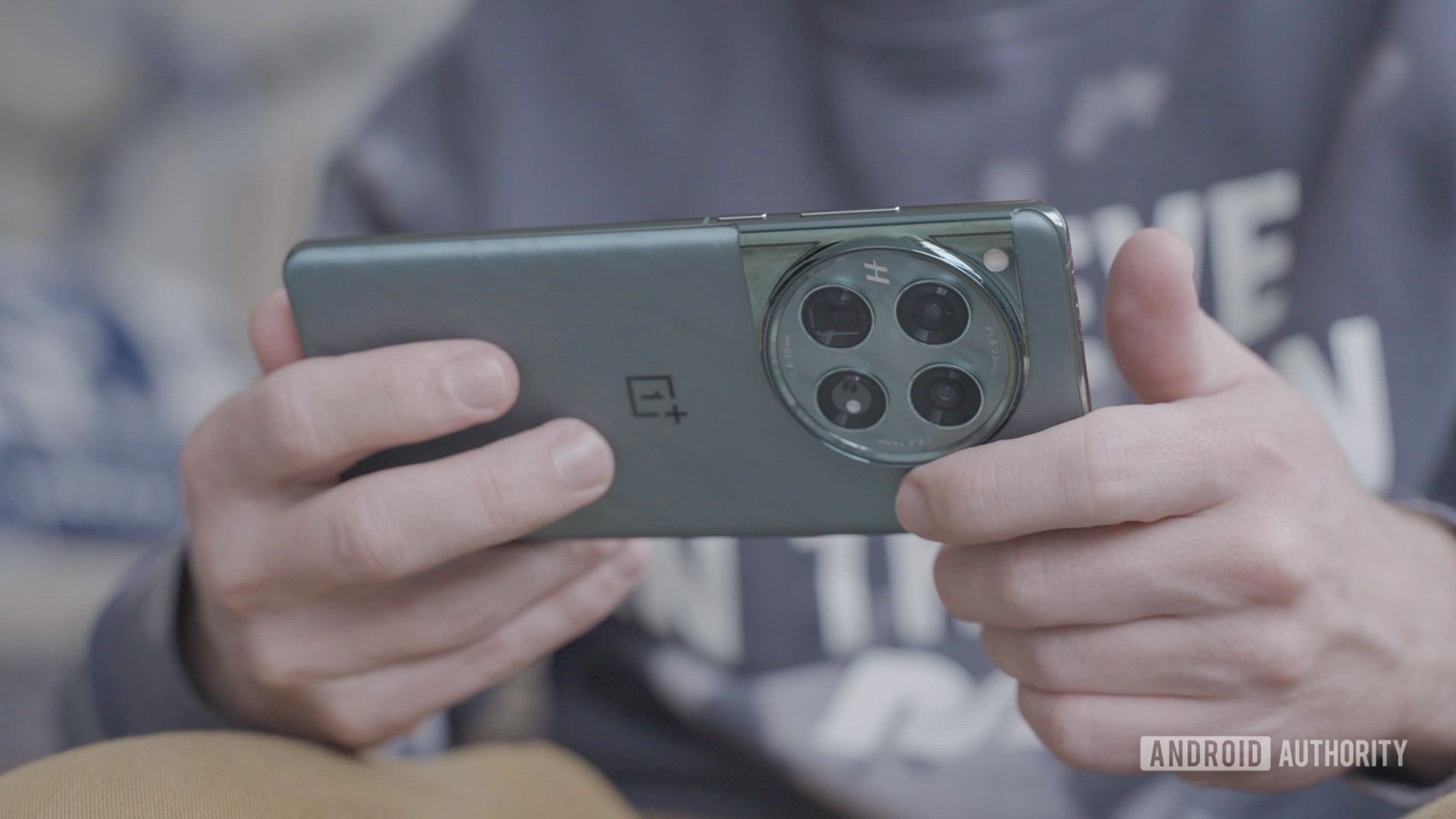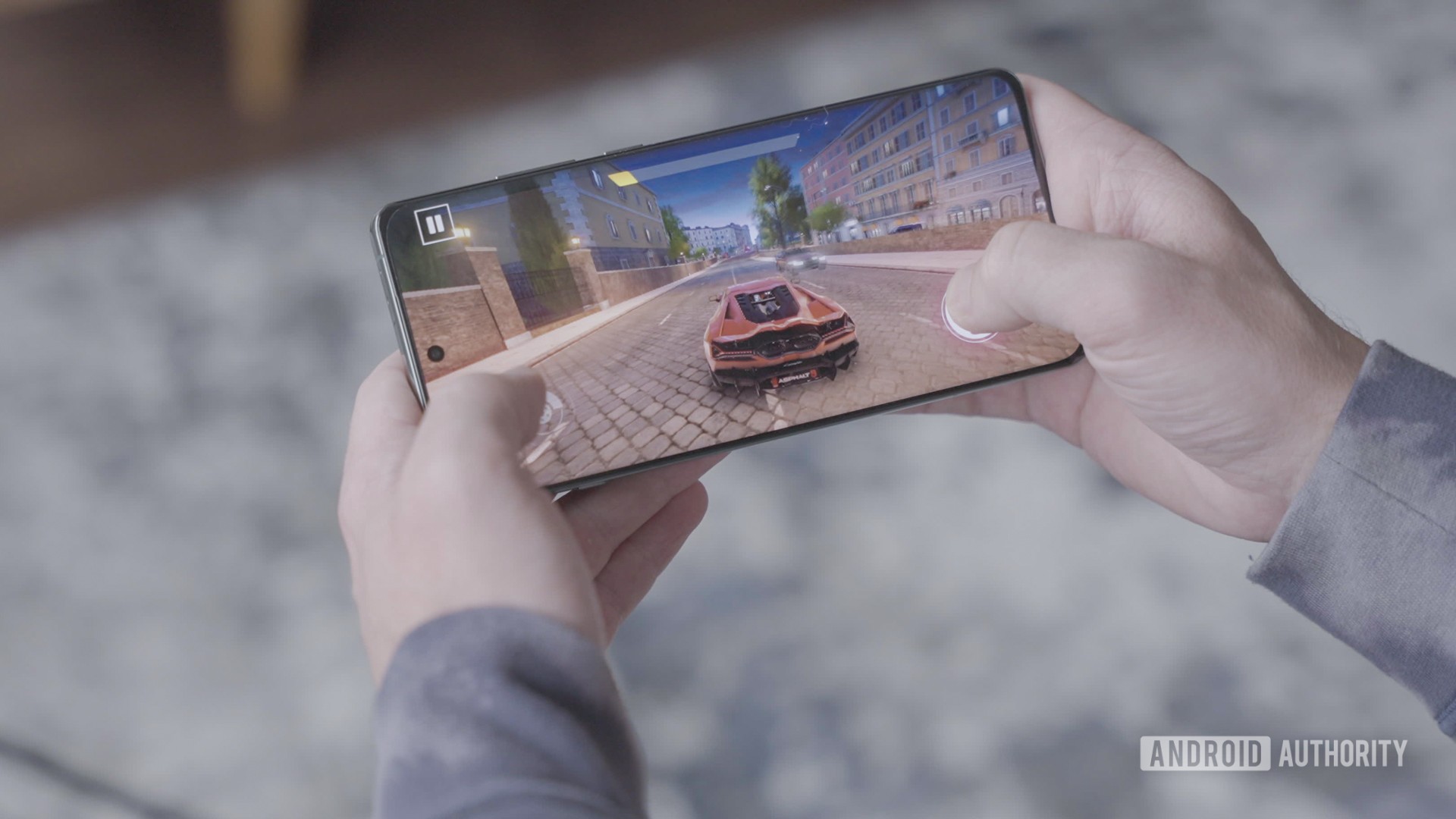Affiliate links on Android Authority may earn us a commission. Learn more.
The OnePlus 12 is a great gaming phone in disguise
The OnePlus 12 is a gaming phone. It doesn’t look like one and is being marketed more as an all-around flagship, but the spec sheet clearly shows a gaming beast in disguise. And, as someone who never really got into the aggressive gaming styling of other phones or any of the graphically intense mobile games, I find that undercover gaming prowess to be my favorite part of the OnePlus 12.
Built to compete

The OnePlus 12’s gaming phone potential becomes clear pretty quickly once you dig into its specs. Its massive 6.82-inch display is immersive, just a hair bigger than the previous OnePlus 11’s panel, and offers a variable refresh rate that drops from 120Hz to 1Hz when needed. On top of the smooth refresh rate, the OnePlus 12’s 2K display offers blinding levels of peak brightness. It tops out at 4,500 nits in some situations, a full 1,700 nits brighter than the OnePlus Open, and easily beats the best phones from Apple, Samsung, and Google.
The rest of the OnePlus 12’s internals keep it right alongside the best Android and iOS. It has Qualcomm’s latest Snapdragon 8 Gen 3 processor under the hood, as well as plenty of RAM and storage. You can grab the device with either 12 or 16GB of LPDDR5X RAM and up to 512GB of fixed UFS 4.0 storage, which is more than enough for massive titles and plenty of Hasselblad-tuned photos to compete with the best camera phones around. OnePlus also wants to claim the battery life and charging crown with a 5,400mAh cell, 80W wired charging in the US, and 50W wireless charging back on the table after a prolonged hiatus.
OnePlus' Trinity Engine and dual vapor chambers give it a sharper gaming edge than its top rivals.
However, the real strength of the OnePlus 12 lies in what you won’t find on rival flagships. OnePlus’ proprietary Trinity Engine and Dual Cryo-velocity Cooling System work to balance performance and power consumption to stretch the OnePlus 12 just a little bit further. As the name suggests, the Dual Cryo-velocity Cooling System uses not one but two vapor champers sandwiched around the SoC to keep the OnePlus 12 running smoothly. The smaller chamber builds up the immediate vapor, which then passes to the larger chamber to spread the cooling load more evenly.
Gamers specifically need the Trinity Engine for what OnePlus calls HyperBoost, HyperRendering, and HyperTouch. HyperRendering sounds pretty straightforward, but the process relies on a dedicated Pixelworks X7 visual processor to smooth transitions and add a little more pop to in-game visuals. It’s also key to ensuring that the OnePlus 12 achieves a full 120Hz refresh rate in any game you jump into. HyperTouch, on the other hand, essentially works to counteract the OnePlus 12’s waterfall display. It uses sensitive algorithms to differentiate between softer presses on the edges of that display, with the taps on the middle of the display that you need to get through your game.
Cool under pressure

Of course, everything above is what you see on the spec sheet and what you expect in terms of fancy marketing language. In reality, I wasn’t sure how to approach the OnePlus 12 when it arrived for review. It doesn’t look radically different from its predecessor and doesn’t have a mountain of AI features to translate calls or edit photos with.
Then, I started running benchmarks and downloading apps. I put the OnePlus 12 through our standard slate of 3DMark stress tests before jumping into any gaming myself, and it breezed through them with hardly a second thought. It put up scores on par with Samsung’s top-end Galaxy S24 Ultra, which is $500 more expensive, and the ASUS ROG Phone 8 Pro, a dedicated gaming phone that also costs $400 more than the OnePlus 12 — not to mention costing more than the OnePlus 12R. OnePlus’ dual vapor chambers also showed their strength in the prolonged stress test, keeping the phone comparatively cool — I was able to pick the phone up again right after the test without feeling like I was sinking into lava like Arnold Schwarzenegger in T2.
Now, benchmarks mean very little in the grand scheme of things (look at the Pixel 8 Pro’s middling results), but the OnePlus 12 keeps up its strong performance once you hop into games in the real world. It was my travel companion for a quick trip to a Ford event in Detroit, where I put it through its offline paces in puzzlers like Railbound and online racers like Asphalt 9: Legends. The OnePlus 12 held up nicely during prolonged sessions of Warhammer 40,000: Tacticus, too, a game that’s notoriously turned other review devices into handheld ovens. It’s not to say that the OnePlus 12 never got warm — it bumped up a few degrees around the camera bump over time — but it stayed comparatively cool, and I never felt like the heat was slowing down the device.
Ultimately, it’s a pretty solid performance for a phone that I initially thought lacked a bit of direction. Instead, OnePlus made a $799 flagship with blistering fast charging, plenty of RAM and storage, and a 4th generation Hasselblad-tuned camera that just so happens to be excellent at gaming, too.

